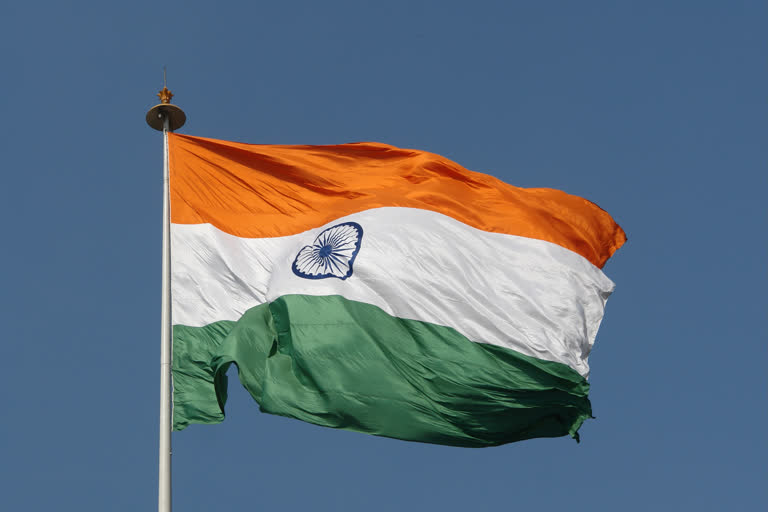Hyderabad:At a time of hyper-nationalism, when national symbols such as the 'tricolour' has been subjected to series of controversies, triggering debates on whether each citizen retains the right to individually determine its significance and purpose.
On 22 July 1947, the Constituent Assembly of India adapted the Indian national flag, a horizontal rectangular tricolour comprising of saffron, white and green, with the Ashoka Chakra -a 24-spoke wheel- in navy blue colour at the centre.
The idea of the tricolour was drawn from the Swaraj flag - a flag of the Indian National Congress - which was designed by Pingali Venkayya in 1923.
As per the Indian Flag Code, the saffron colour represents courage and sacrifice, green represents prosperity, white stands for peace, truth and purity, and the navy blue in the Ashoka Chakra represents laws of 'Dharma' or righteousness.
The tricolour was adapted by passing a resolution in the Constituent Assembly, which was moved by Jawaharlal Nehru, in the form of an invigorating and emotional speech describing the decades-long struggle for freedom. The speech was made in the backdrop of India rising from the ashes of years of British rule, and Nehru emphasised, "There will be no complete freedom as long as there is starvation, hunger, lack of clothing, lack of necessaries of life and lack of opportunity of growth for every single human being, man, woman and child in the country.”
It is in this context that he described the necessity of adapting a national flag as it signified a "symbol of achievement" for the country.
Nehru's address was followed by a speech given by several members of the assembly. While some spoke in favour of the flag, its design, and its adoption, some members raised their concerns. While S Radhakrishnan, who later went on to become the first vice president of India, said that the flag must encourage India to pursue social inclusion, Saiyid Mohammad Saadull, who was the deputy leader of the Muslim League, said that the symbols woven into the tricolour represented the place held by the Muslim community in India.
But, the arguments put forth by poet and politician Sarojini Naidu seem pertinent in today's times. Naidu asked the house. “Who shall limit its inheritance? To whom does it belong?", and concluded, "It belongs to India. It belongs to India.”
With the saffron in the national flag often represented as the colour representing the Hindu community in the country, the speech made by Seth Govind Das, an Indian independence activist and a distinguished parliamentarian, in the constituent assembly stresses, "I want to tell those who say that the saffron colour represents Hindus, that it is wrong to say so...to describe any colour as the ancient colour of the Hindus is historically wrong. I say that it is natural that the flag under which we fought the battle of freedom during the last 27 years and have now achieved independence should be our national flag."
"It was at that time not the colour of Muslims alone or of Hindus but of all those who fought the war of Independence, " Seth added.
VI Muniwamy Pillai, a politician, Scheduled Caste activist as well as an activist in the Indian independence movement, described the national flag as not a flag of, "the rich or the wealthy but it is to be the flag of the depressed, oppressed and submerged classes all over our country. … The Harijan classes and all those communities who are in the lowest rung of the ladder of society, feel that the constitution which is on the anvil of this supreme body is going to bring solace to the millions of the submerged classes."
On this National Flag Day, it is important to revisit the idea behind the tricolour and not fall prey to the divisive forces at work in the country.
Also read:People in Kanpur offer prayers for success of Chandrayaan-2
